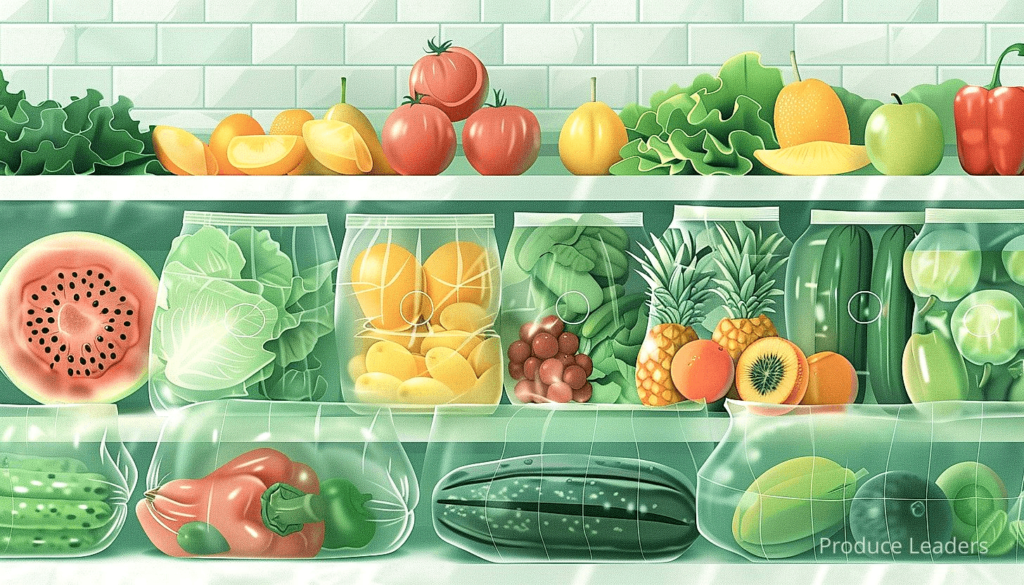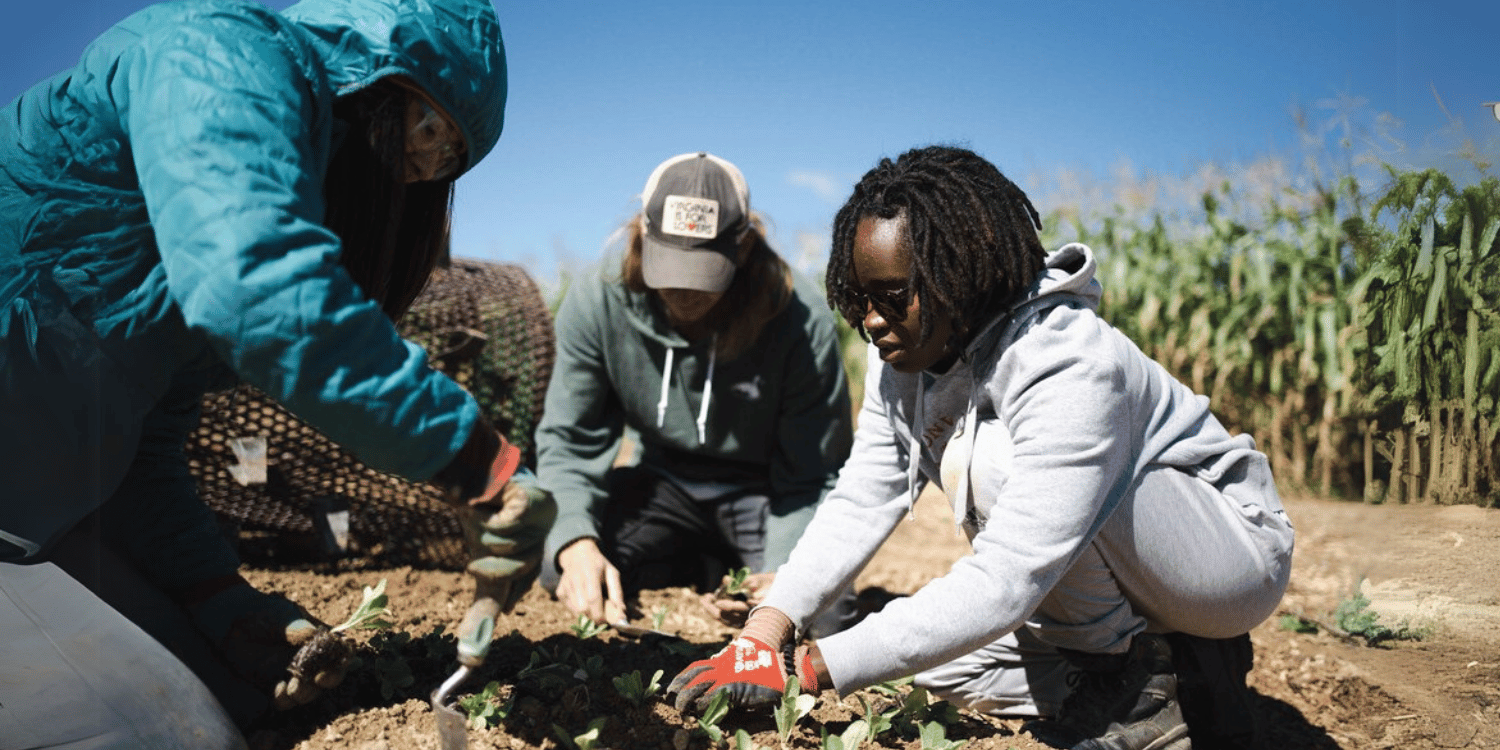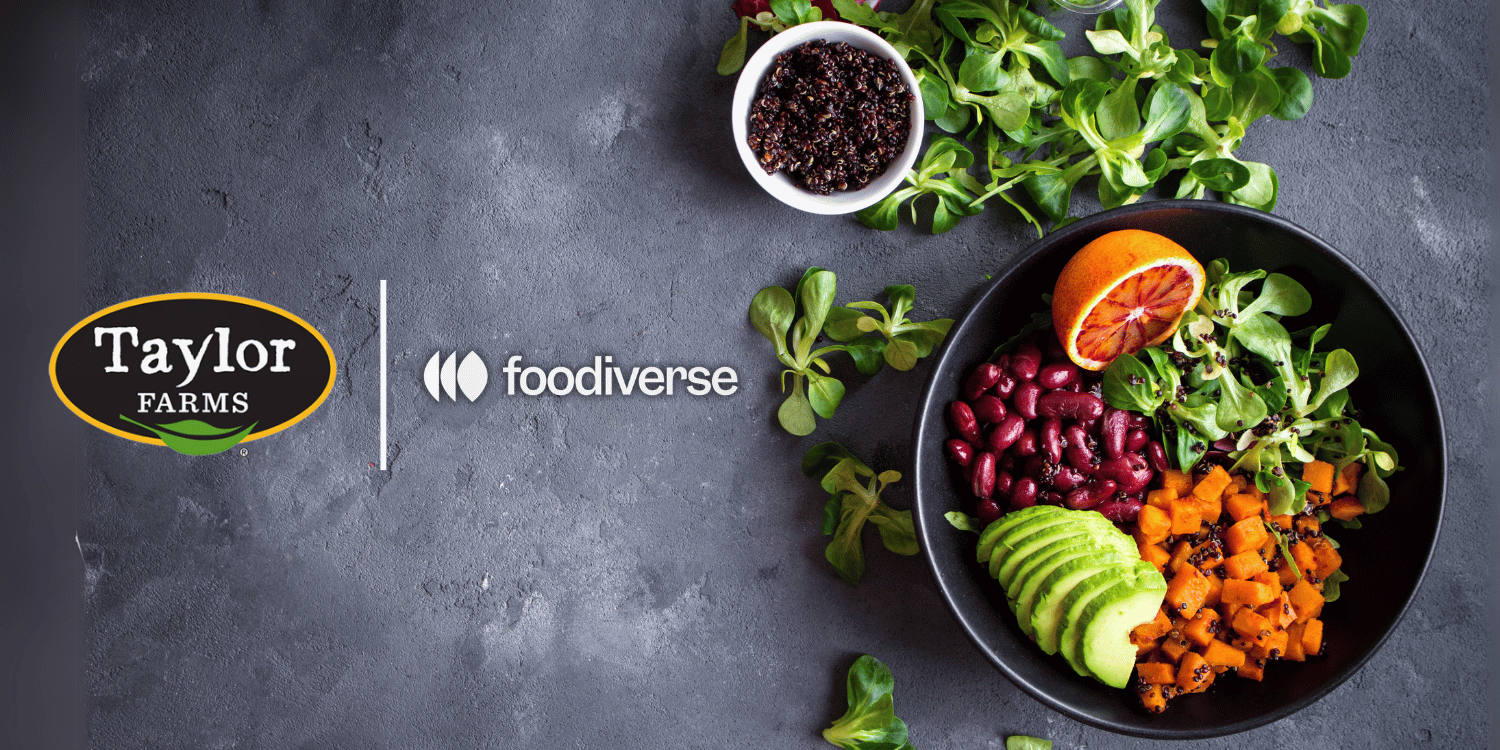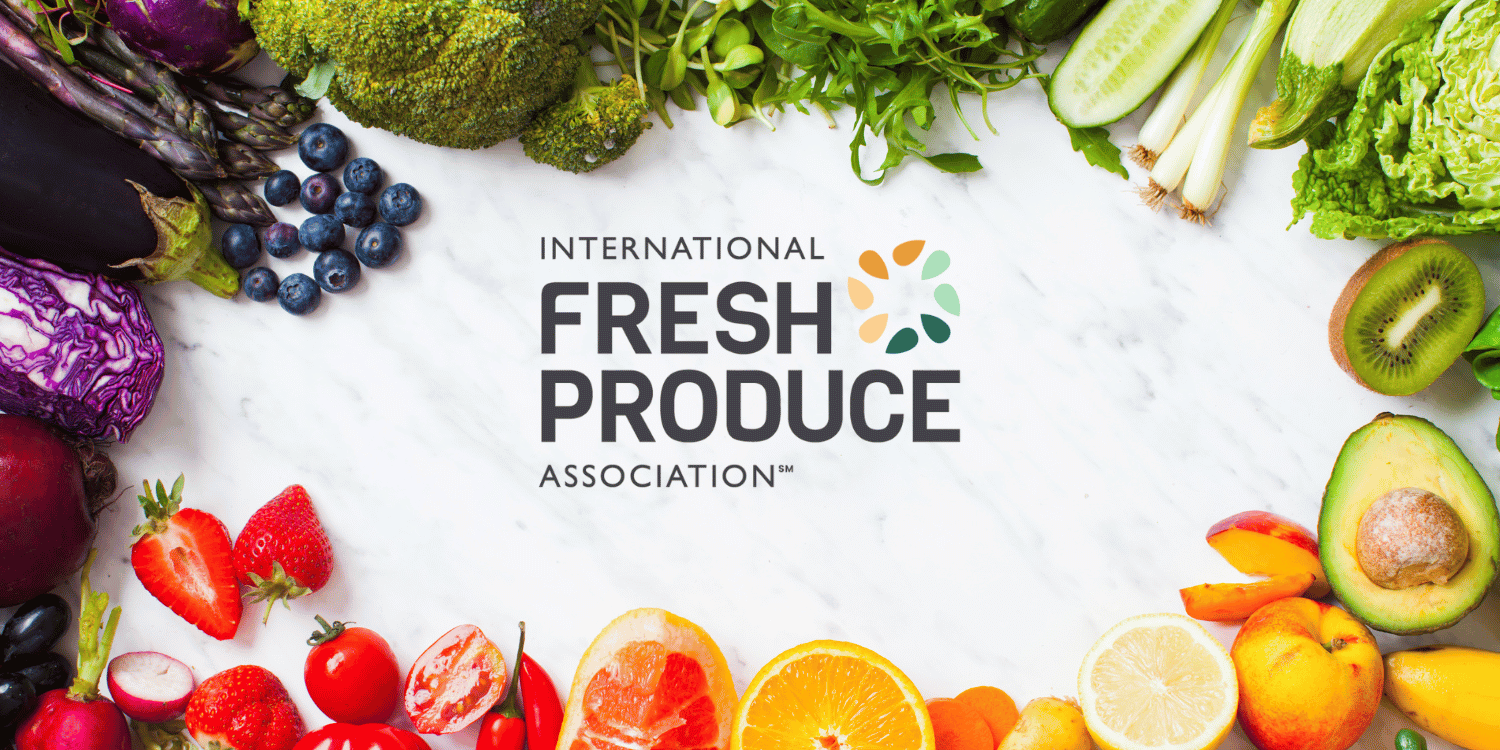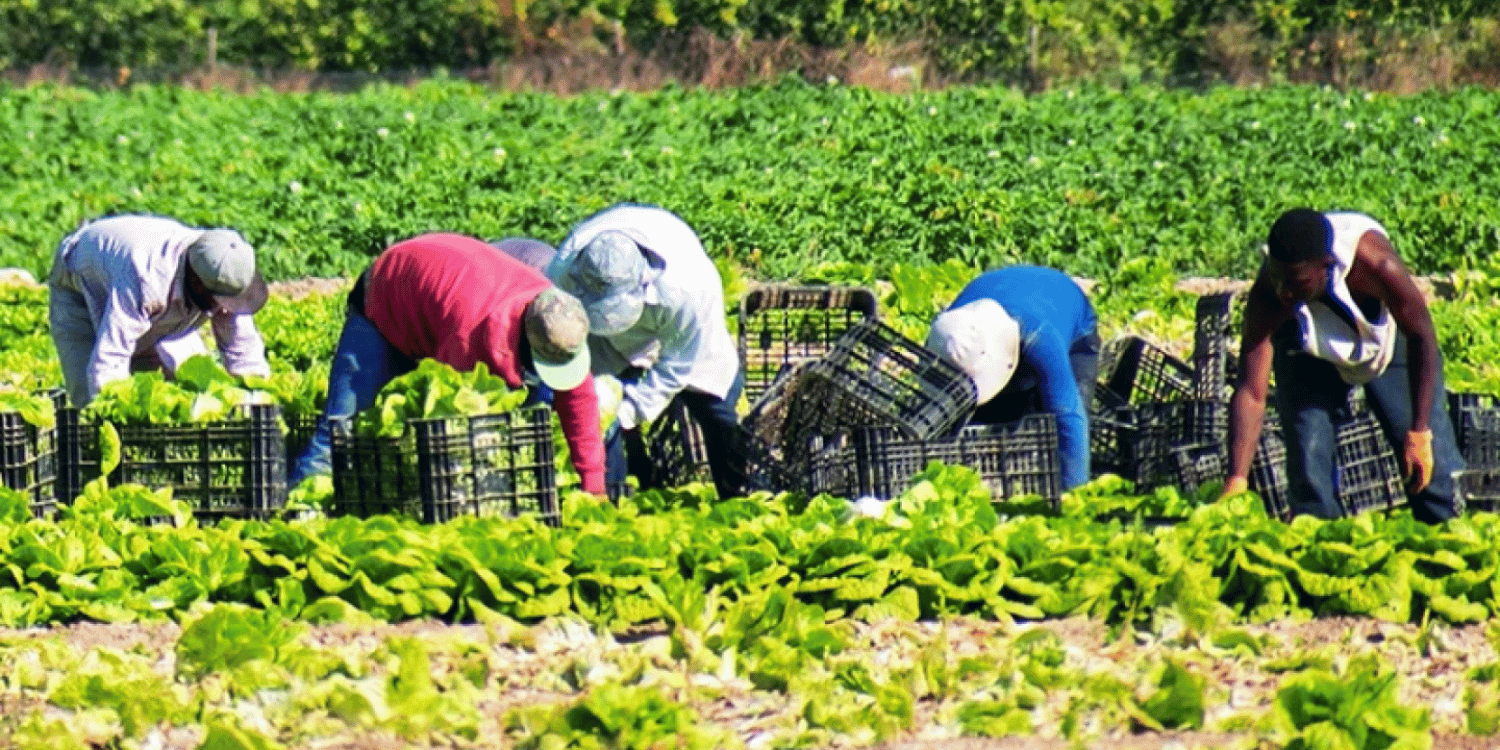Edible packaging presents a significant potential for advancement and innovation in the produce industry.
By employing this ground-breaking technology, produce sellers could fundamentally reduce the volume of waste generated by conventional plastic and cardboard packaging.
Edible packaging, typically made from food by-products or other organic substances, can also help to extend the shelf life of fresh produce, improving overall profitability.
Consumers’ growing eco-consciousness and the escalating demand for sustainable products could drive acceptance of edible packaging in the mainstream market.
Moreover, this technology might enable the creation of new premium product lines that could enhance the competitiveness of businesses using it.
Depending on regulatory approval and consumer acceptance, the use of edible packaging could revolutionize the produce industry, fostering sustainability while maintaining profitability.
- Edible packaging is a sustainable packaging solution made from food-grade materials.
- It offers benefits like waste reduction and extended shelf life of produce.
- Consumer response to edible packaging is generally positive, implying its acceptance.
- Edible packaging can potentially increase profits in the produce industry.
- There exist regulations surrounding the use of edible packaging in various countries.
While these key takeaways provide a solid understanding of the potential for edible packaging, there are various facets of the topic that warrant further exploration.
Upcoming sections will shed light on essential aspects such as the types of materials used to produce edible packaging, innovative examples of its application, along with opportunities and challenges faced by this technology.
We’ll also discuss relevant case studies and insights from industry experts.
There’s a wealth of information to broaden your understanding and prepare you better for discussions and decisions involving the future of sustainable packaging. Don’t miss out!
Contents
What Is Edible Packaging?
In Short: Edible packaging is a biodegradable and potentially consumable form of food packaging, aimed at reducing plastic waste and promoting sustainable food storage. Made from materials like seaweed, milk proteins, and lipids, it ranges from simple edible films to innovative solutions like edible water bottles and cutlery.
Chances are that you’ve encountered edible packaging more times than you realize. But what exactly is this eco-friendly concept that has the potential to revolutionize the produce industry?
Edible packaging, as the name suggests, is a type of biodegradable food packaging that can be consumed. Yes, you heard that right! The packaging is specially designed to contain food and then be eaten along with the food it contains.
We’re talking about an innovative approach to food packaging that doesn’t just stop at being eco-friendly. Imagine cracking open a chocolate egg and then eating the shell as well! Sounds intriguing, doesn’t it?
Edible packaging is made using edible materials such as lipids, polysaccharides, proteins, and combinations of these ingredients. These edible materials can include natural substances like seaweed and milk proteins, which give them a taste.
But don’t mistake this innovation for a gimmick. This approach is the result of rigorous research and development. It is a serious attempt to reduce plastic waste, promote sustainable food storage, and create a more efficient food supply chain.
The big question now might be, “Why would I want to eat my food packaging?” Well, it’s quite simple, actually. Apart from being biodegradable, edible packaging often has nutritive value, which means it contributes to your diet.
Let’s take a closer look at the different types of edible packaging currently in use or development. These range from everyday items like burger wraps to more innovative solutions.
Here’s a short list of a few types of edible packaging:
- Edible films and coatings: Used to extend the shelf life of fruits, vegetables, and meat products.
- Edible water bottles: A fun and refreshing alternative to single-use plastic bottles.
- Edible cutlery: Made from wheat bran, they are a sustainable alternative to plastic cutlery and can be eaten after use.
- Edible food cans: Hard-shell packaging designed to hold and preserve food for extended periods.
Let me tell you, how does eating your packaging sound now? The idea might take some getting used to, but the environmental benefits can’t be ignored.
It’s important to note that not all edible packaging is designed to be eaten. It’s about the possibility of consuming it without harm. Thus, “edible” is somewhat synonymous with “non-harmful” when it comes to packaging.
Pro Tip: Consider using edible packaging, as it’s an eco-friendly approach that not only reduces plastic waste, but often has nutritive value, contributing to your diet as well.
Think about it – being able to discard your food packaging without worrying about the environmental impact. Or even better, enjoying a tasty treat as you finish your meal! It’s an additional perk, wouldn’t you say?
In a world where sustainable practices are no longer optional but essential, edible packaging can indeed be a game-changer. After all, who wouldn’t appreciate reducing their environmental footprint while enjoying a snack?
How Is Edible Packaging Made?
In Short: Edible packaging is derived from organic waste products such as seaweed, and vegetable skins, which are cleaned, powdered, and mixed with water and a binding agent to form a thin, edible film. Despite challenges in preserving shelf life and ensuring robustness compared to traditional plastic packaging, the innovation holds potential in reducing reliance on non-biodegradable packaging materials.
For those new to the concept of edible packaging, it can seem quite alien, wouldn’t you agree?
An important beginning step in the manufacturing process is choosing the right material to make the packaging edible and practical.
The complexity of creating an edible packaging starts with identifying an organic source material for the packaging. This source material is typically a byproduct of the food industry that would otherwise be considered waste.

Common examples of this include seaweed, as well as fruit and vegetable skins.
Isn’t it wonderful that we can repurpose potential waste into something so practical?
Next, let’s present a list of the more common steps involved the manufacturing process.
- The selected raw material is cleaned thoroughly to remove any impurities.
- This material is then dried out and pulverized into a very fine powder.
- This powder is then mixed with water and a binding agent, forming a thin paste.
- This paste then gets rolled into a very thin sheet and is left to dry, forming the basis of the edible film.
It’s a simple and efficient process, isn’t it?
However, it isn’t without its challenges.
One significant concern in edible packaging is its fragility and low barrier properties comparative to plastic wraps.
It is important that these edible containers remain robust during transit and storage, a problem that presents a constant challenge for companies.
Another challenge lies in the preservation of the product.
Traditional plastic packaging helps to prolong shelf life.
Edible packaging, on the other hand, often doesn’t provide the same level of protection against moisture, oxygen, and other elements that can lead to spoilage.
However, edible packaging can be enhanced with antimicrobial substances derived from fruits and vegetables to help delay the growth of harmful bacteria.
Isn’t it fantastic to see the innovations being made in the name of sustainability?
It’s clear that edible packaging holds significant potential in the produce industry.
With ongoing research and development, we may soon witness a new era in the spirit of reducing our reliance on traditional, non-biodegradable plastic packaging.
Being a part of such a change would be amazing, wouldn’t it?
Advantages of Edible Packaging
In Short: Edible packaging offers environmental benefits by being biodegradable and reducing fossil fuel use, while also promoting positive public perception and customer loyalty. Furthermore, it extends product shelf-life, enhances convenience for consumers, and represents a sustainable, economically beneficial path for the produce industry.
A shift towards edible packaging in the produce industry promises an exciting scope of benefits.
Arguably, one of the most significant paybacks is evident in the realm of environmental conservation.
Doesn’t our planet deserve every opportunity for a healthier future? We are all too aware of the issues plaguing our environment due to conventional plastic packaging.
- Edible packaging is biodegradable, cutting down on waste that makes its way to landfills or ends up cluttering our oceans.
- Furthermore, it reduces the reliance on fossil fuels that are required in traditional plastic production.
Secondly, the participating companies stand to enjoy positive public perception and increased consumer loyalty.
Today’s consumers are more informed and aware; they often prefer businesses that project an environmental-friendly mantra.
Who doesn’t like the idea of supporting a company that is taking an innovative step to address a global problem? The appeal extends beyond the produce itself to promote a company’s ethos and commitment to the environment.
Adopting edible packaging can indeed aid businesses to distinguish themselves in an increasingly competitive market.
Another key argument for edible packaging lies in the extended product shelf-life it provides.
These packages generally comprise of natural materials like seaweed or milk proteins, which offer a form of protective coating. Being able to prevent moisture loss, they help maintain product freshness for longer periods.
Isn’t it a win-win situation when increased shelf life reduces food spoilage, aiding both consumers and businesses alike?
The fourth advantage of edible packaging is the amplified convenience it provides.
Imagine peeling an orange and directly popping the skin into compost knowing it has no plastic residue. How wonderful is it that consumers need not separate food from the packaging, but can opt to eat them together, or dispose of them without any guilt?
In the light of these factors, the potential of edible packaging seems to cast a spotlight on a new, highly beneficial path for the produce industry.
Important: Edible packaging, being biodegradable and reducing reliance on fossil fuels, not only helps in environmental conservation but also increases product shelf-life, amplifies convenience, and can foster positive public perception and consumer loyalty for businesses.
A path that champions sustainability, convenience, and economic growth.
Isn’t this a step worth considering? After all, a small change in the packaging approach could lead to substantial gains for all stakeholders and the planet as a whole.
Does Edible Packaging Reduce Waste?
In Short: Edible packaging reduces waste significantly as it eliminates the use of plastic, reduces post-consumption waste, and minimizes greenhouse gas emissions. It also adds value for consumers, supports environmental goals, and could provide cost-effective solutions for producers, heralding a potential revolution in food packaging and waste management.
Yes indeed, edible packaging does help reduce waste to a large extent.
Imagine a future where you bite into an apple, and there’s no need to discard any plastic wrapping.
The apple is not just fresh, but the used package doesn’t add a speck to the mounting pile of waste. Doesn’t that sound interesting?
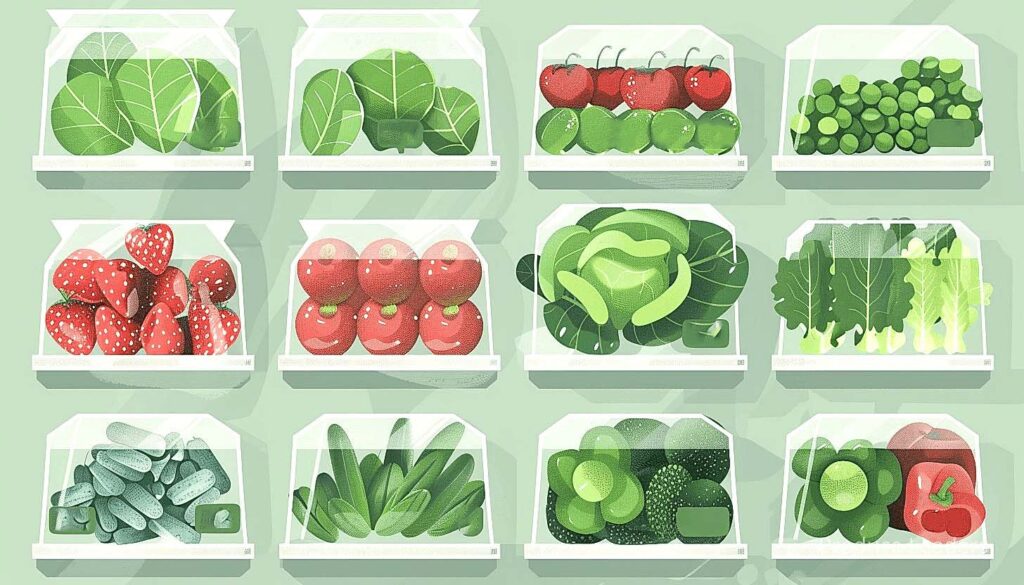
That is the potential of the innovation sitting in front of us right now, edible packaging aims to significantly reduce waste as we know it.
In traditional produce packaging, we generate an enormous amount of plastic waste.
From cling film to vacuum-packed bags and more, how many of these plastic packages end up in the recycling bin?
After all, we cannot dump the responsibility solely on consumers.
The produce industry must also play its part to find a solution.
The solution may be here already, edible packaging.
Now, let’s dig in into how edible packaging works to solve these issues:
- Elimination of plastic: Edible packages are not wrapped in plastic, there is no need to dispose of anything after use.
- Reduction of waste: They lead to zero post-consumption waste, you eat the protective layer along with the food product it protects.
- Minimization of greenhouse gases: Less waste means less garbage sitting in landfills producing methane, a powerful greenhouse gas.
The edible packaging solution offers more than waste management and environmental care.
It also adds value to the user’s purchase because the package is part of the experience.
Remember that guilt of discarding plastic packaging?
It’s nonexistent with edible packaging.
Convincing, isn’t it?
Consider the bigger picture.
Even governments and environmental bodies are moving towards reducing plastic waste.
Edible packaging popping up in the produce industry could help fast-track reaching such environmental goals.
On top of this, there are economic benefits for the producers too.
The cost of edible packaging can be less compared to plastic over time, especially when mass produced.
Thereby making it a potentially cost-effective solution for businesses to adopt.
With less cost to businesses and massive benefits to the environment, edible packaging could be the answer for a sustainable future in food production.
Are you starting to see the massive potential?
Pro Tip: Switching to edible packaging in the produce industry can significantly reduce plastic waste, minimize greenhouse gas emissions, and be a cost-effective solution, contributing to a more sustainable future.
Reducing waste might be the tip of the iceberg for what edible packaging can achieve.
Edible packaging might just revolutionize our relationship with food, packaging, and waste.
Shelf Life Extension with Edible Packaging
In Short: Edible packaging extends the shelf life of produce and enhances consumer experience while reducing food and plastic waste. However, this nascent technology requires significant research and infrastructure changes for its potential to be fully realized.
As we dive deeper into the nuances of edible packaging, one clear advantage surfaces – the potential for extending shelf life. Isn’t it amazing how innovation can tackle food waste?
Edible packaging has been linked with reducing food spoilage and increasing longevity. It essentially grants producers control over the rate of respiration and humidity within.
Pause and ponder, wouldn’t it be revolutionary to significantly reduce global food waste?
Edible packaging does more than just curb waste. It holds immense potential to preserve the feeling of freshness and boosts the overall consumer experience.
Think about it, isn’t it a boon to have produce that stays crisp, fresh and appetising for longer?
The use of edible packaging provides a barrier to oxygen too. Slowing down the oxidation process mitigates the browning and fermentation often seen in fruits and vegetables.
- Coatings are directly applied to produce surface,
- Wraps can cover individual pieces of produce,
- Casings serve as an outer shell or skin for processed food items,
- Lastly, Films are typically used for packaging produce slices.
These unique solutions each carry their own specific benefits. Worth a consideration, isn’t it?
Also consider the fact that, these packaging methods not only reduce food waste but also the plastic waste typically involved in traditional packaging.
Isn’t the dual advantage of cutting down food waste and reducing plastic usage compelling? Edible packaging is proving to be a game changer here.
A noteworthy point is, this technology is still at a nascent stage. Is everyone ready for the change? Will consumers embrace this innovation, and can industries adapt?
There are a lot of complex facets to explore, but the potential is undeniably big, tantamount to an epoch-making shift in the food industry.
Keep in mind, this does not insinuate ease of transition. Are we prepared to undertake the necessary research, funding, and infrastructure changes?
It’s clear that edible packaging, and its potential shelf life extension attributes, presents an exciting frontier to explore.
Important: Edible packaging not only has the potential to extend shelf life and significantly reduce global food waste, but also minimizes plastic waste typically involved in traditional packaging.
Yet, we have to be mindful about its threat to existing industrial norms. Are we ready to pivot, and transform the produce industry for the better?
The edible packaging avenue is akin to a bold adventure. Articulating these facets of edible packaging, I see the potential to drive the fashion in which our produce is packaged, marketed, consumed and disposed.
Consumer Response to Edible Packaging
In Short: Edible packaging, a new ecological alternative to plastic, is gaining acceptance among consumers due to its potential to reduce waste. However, factors such as environmental awareness, safety concerns, cost, and taste are significant to its success and must be properly addressed by manufacturers.
Edible packaging is rapidly gaining attention both from industry professionals and consumers alike. Its unique combination of innovation and sustainability has found wide appeal.
However, it is essential to understand consumer perception of this packaging alternative. What do they really feel about consuming packaging as part of their meal?
The primary appeal of edible packaging lies in its potential to reduce waste. Plastic, in particular, has become a significant contributor to environmental pollution, and consumers are increasingly aware of this.

This rising environmental consciousness has caused a shift in purchasing habits. For many consumers, choosing products with less environmental impact has become a priority.
But how does this translate to edible packaging? Are consumers really ready to shift from traditional packaging to something quite so unusual?
In surveys and studies, it seems the answer is a cautious yes. Most people are willing to try edible packaging, showing an initial openness to the concept. But does this enthusiasm hold up in practice?
Edible packaging is still a new concept for most consumers, and its novelty may initially attract curiosity and interest. However, maintaining this interest will be the real challenge.
A good example would be, taste and texture will play a significant role. For edible packaging to be successful, it cannot compromise the eating experience. If it does, consumers could quickly lose interest.
According to recent research, certain factors can influence a consumer’s willingness to adopt edible packaging in their daily life. Allow me to present a few important ones:
Pro Tip: For successful adoption of edible packaging, it’s crucial to address consumers’ concerns about environmental impact, safety, cost, and the taste and texture, while also continually educating them about its benefits.
- Environmental awareness: The more aware and concerned consumers are about environmental issues, the more likely they are to be open to edible packaging.
- Safety concerns: Some consumers have raised concerns about the potential hygiene risks of edible packaging. These concerns need to be addressed convincingly by producers.
- Cost factors: As with any new product, cost is always a significant consideration. If edible packaging is significantly more expensive than traditional options, it could discourage some consumers.
- Taste and texture: As mentioned before, the taste and texture of the packaging shouldn’t detract from the overall eating experience.
Overall, there is a positive trend towards accepting edible packaging among consumers. However, it is crucial that manufacturers address consumer concerns and expectations adequately.
While it is likely for some resistance to change to exist, ongoing consumer education about the benefits of edible packaging could gradually overcome these obstacles. In the end, it will be up to the consumers to determine the success of edible packaging.
Can Edible Packaging Boost Profits?
In Short: Edible packaging, an environmentally sustainable practice, can enhance product appeal, increase profits by preserving product freshness, and help reduce waste. This innovation has the potential to attract new customers, command higher prices, and improve profitability through reduced losses from spoiled produce.
It’s an increasingly common question being echoed across industry conferences and trade shows. As you may be aware, edible packaging has been making waves in the packaging industry, and for good cause.
This revolutionary practice is not only environmentally sustainable, but has great potential for changing profit margins in a significant way. But how exactly can this shift materialize into increased profitability?
First off, remember consumer demand. Incorporating bio-based packaging can substantially enhance the product appeal. Today, consumers, more than ever, are showing preference for environmentally friendly products. Isn’t it an appealing thought that your product could stand out in the market as a sustainable option, thereby attracting a new customer demographic?
In the world of produce, where quality and freshness are important, edible packaging brings a fresh perspective. This innovative packaging serves dual functions – protecting produce quality and reducing waste.
Here’s a look at some of the ways edible packaging can indeed boost profits:
- Edible packaging can help preserve produce freshness, reducing losses from spoilage.
- Innovations like this can often command a higher price point.
- Marketing the product as environmentally friendly can bring in new customers.
There’s substantial value in edible packaging technology in reducing food waste. Consider this – the average supermarket loses thousands of dollars annually to spoiled produce. Less waste on the shelves can translate into increased revenue.
Wouldn’t it be great if these losses could be drastically reduced? By maintaining the freshness of produce for a longer period, edible packaging can help accomplish just that.
Additionally, introducing edible packaging may also allow for a justifiable increase in product pricing. How so? Well, many consumers are willing to pay a premium for innovative, eco-friendly solutions. This boost in product price could significantly contribute to overall profitability.
It’s also imperative to note the benefits of branding and marketing. With consumer concern over the planet’s wellbeing seemingly at an all time high, marketing products as environmentally-sound options can be a game changer.
There’s no denying that transitioning to edible packaging requires an initial investment. To implement this technology, companies may need to redirect funds or seek out investors. But isn’t it reasonable to expect these costs to be covered by the aforementioned gains in profitability?
Is profitability guaranteed with the shift to edible packaging? Certainly not. Like any business decision, it carries risks alongside its rewards. But it can’t be denied that there’s immense potential for profitability improvement through edible packaging.
With careful planning, and an understanding of your consumer base, the integration of edible packaging into your business model could be a lucrative move. However, making such a big move requires careful consideration, planning, and an understanding of your consumers. After all, isn’t the end goal boosting profits, appealing to consumers and preserving our environment?
Regulatory Considerations for Edible Packaging
In Short: The FDA regulates edible packaging, requiring all ingredients to be safe, the product to be clearly labelled, allergen controls to be in place, and adherence to good manufacturing practice. Innovators in this field need to balance technological advancements with regulatory compliance for success.
The emergence of edible packaging has sparked a new discussion on regulatory aspects.
What are the guidelines that dictate these innovative solutions?
It’s important to acquaint ourselves with the rules and regulations that ensure product safety and consumer protection.
Let’s start with a familiar agency, the Food and Drug Administration (FDA).
Did you know that the FDA oversees all food contact substances (FCS), including edible packaging?
This means that those creating edible packaging need to ensure their products meet FDA-approved guidelines.
This is crucial not only for legal acceptance, but to maintain consumer’s trust, and isn’t that the goal?
Allow me to present a general overview of some key regulatory areas one should be aware of when venturing into the world of edible packaging:
- Ingredients status: All constituents used in the package need FDA approval as food additives or generally recognized as safe (GRAS) substances.
- Labeling: Requirements pertain to listing ingredients, address of the manufacturer, net quantity, etc.
- Allergen Control: The FDA monitors the presence of certain allergens in food products, including edible packaging.
The importance of ingredient status cannot be stressed enough.
Each ingredient used in edible packaging, must be recognized as safe by the FDA.
This means that developers must follow ingredient requirements strictly, ensuring that their innovative packaging solutions are not only unique and effective but safe as well.
No one can discount the power of good labeling – don’t you agree?
Clear and informative labeling is not just good business practice, it’s a part of FDA requirements.
Ensuring the consumer knows exactly what their edible packaging contains only helps to strengthen their trust and confidence in the product.
The presence of allergens is another critical consideration.
Just imagine, you’ve created a novel and environmentally friendly edible packaging, but it contains an obscure allergen causing a reaction in unsuspecting customers.
It wouldn’t be too good for your reputation or sales, would it?
As a bonus, there’s one more considerations to think about – good manufacturing practice.
The FDA also mandates that all food items, including edible packaging, must adhere to good manufacturing practice – ensuring the best quality of product for consumer consumption.
From all these considerations, it’s evident that diving into edible packaging is no small feat.
One not only has to keep ahead with the latest technological advancements, but also needs to be conversant with the legalities surrounding this field.
But don’t let that discourage you.
With an idea and a strong understanding of the regulatory landscape, the world of edible packaging, filled with big potential, is ready for exploration.
The Bottom Line
Edible packaging offers an innovative solution in the produce industry by introducing an eco-friendly and waste reducing alternative to traditional packaging.
It is crafted using various natural substances, including proteins, lipids, and carbohydrates, which ensures its safety and compatibility with food products.
This sustainable form of packaging offers multiple advantages such as a reduction in plastic waste, an increase in product freshness, and potential cost savings for manufacturers.
Edible packaging significantly diminishes waste production as it can be consumed or composted, presenting a ground-breaking shift towards a circular economy.
Moreover, the application of edible packaging can extend the shelf-life of produce, thereby minimizing food waste and loss in the supply chain.
Consumer response to edible packaging has been generally positive, with research indicating that shoppers value the ecological advantages and novelty of these products.
In terms of profitability, edible packaging not only has the potential to reduce waste disposal costs, but may also increase revenues by appealing to the growing consumer demand for sustainable products.
However, while edible packaging promises substantial benefits, its implementation must be carried out with careful regard to existing food regulations to ensure consumer safety and trust.

